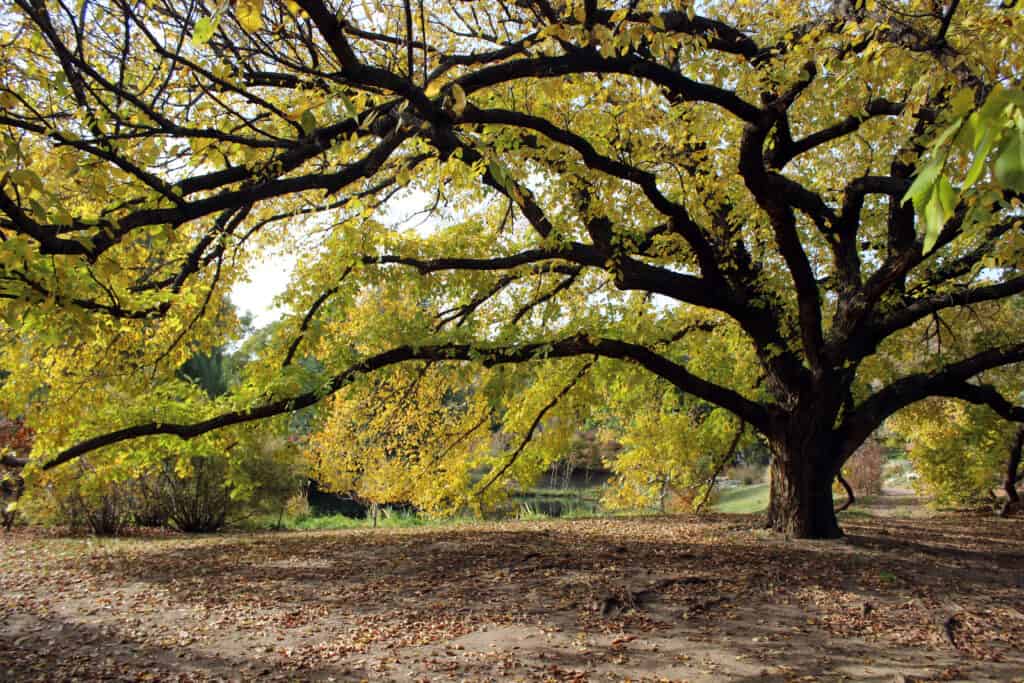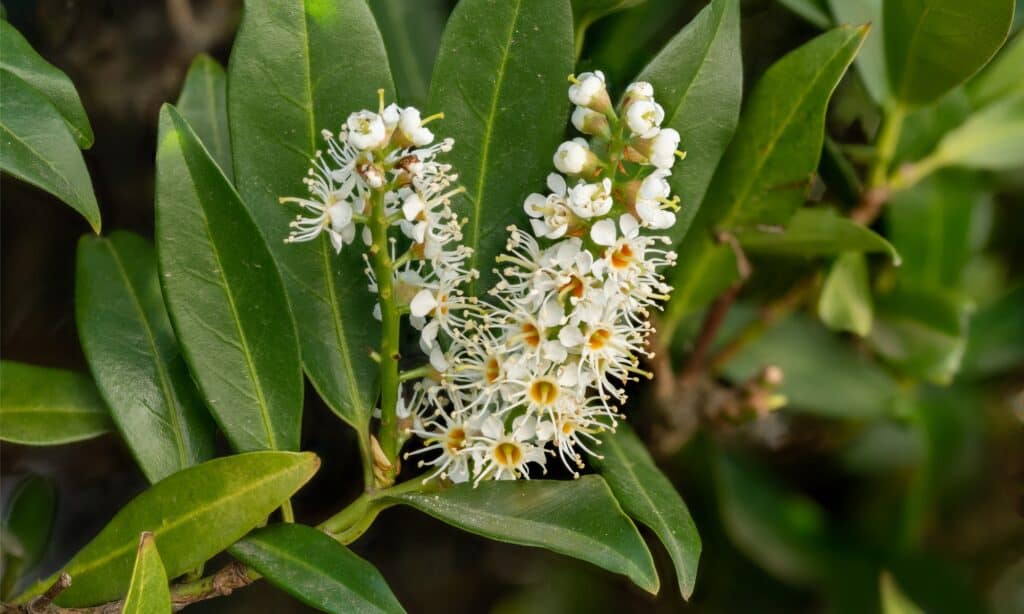In a world of towering buildings and fast-paced activities, access to green spaces has tremendous health benefits for people across socio-economic and demographic groups. Think about neighborhood parks, tree-lined streets, and urban forests. How easily does nature help you feel relaxed and free?
Perhaps you’re a plant parent who plants trees in your house to contribute to urban greening. Away from the importance of green infrastructure, planting trees today will be profitable for you down the road if you intend to sell your house. Homes with attractive landscaping and trees typically attract more buyers than those with more bare yards. Trees and landscaping can increase the value of your property by up to 20%.
In addition, trees lower the likelihood of flooding in your area by creating a barrier between your property and invading water. In summer, you might find that you don’t need to use air conditioning as much since trees prevent too much heat and sunlight from entering your home.
What better place to reap the environmental, health, and economic benefits of tree planting than Texas? Texas is home to the fourth most populous city in the country. This state is a tree lover’s delight. Many indigenous tree species are in the Lone Star State. These include the piney woodlands of East Texas to the oak forests of Central Texas. However, consider the type of tree and what it will do for your yard before you put any tree there.
How to Choose the Right Tree for Your Environment
Planting depends heavily on the weather. Mild temperatures and rainfall are excellent for newly planted trees. Spring, early fall, and late winter are good times to plant. However, the plants need time to take root and adapt before the summer’s heat and dryness or the winter’s freezing temperatures.
One type of tree might be a better option than another based on the features of your home. In contrast to willow trees, which like incredibly moist soil, oak trees prefer some soil acidity.
How tall and wide will the tree be at maturity? Consider factors like overhead electricity lines that will restrict the tree’s height. As well as the proximity of your new tree to sidewalks, driveways, and houses.
Planting large trees like Cedar Elm or Pecan is recommended in right-of-ways at least 25-30 feet long and 6-8 feet wide. When they reach nearly 30 feet, they will have a wide-spreading canopy covering much of the yard and curb area.
Right-of-ways at least 15-20 long and 4-6 feet should be used to plant small trees, such as Mexican Plum, Vitex, Oklahoma Redbud, and Desert Willow. Small trees often don’t reach heights of more than 15 feet, so there is little risk of their growing tall enough to pose a danger when placed close to power lines.
Before purchasing, consult a local arborist about the best trees for your property, considering all relevant factors.
Fastest-Growing Trees
While it’s true that planting trees around your home is a form of long-term investment, you don’t have to wait long to enjoy the advantages of cooling shade in your yard, increased privacy, and higher property value if you plant any of these kinds.
Live Oak

iStock.com/Sunshower Shots
Live oak brings a lot to the table regarding fast growth, drought tolerance, vast shade, ease of care, and appearance. This impressive evergreen tree with broad leaves will bring beauty to your home. It can live for hundreds of years, grows quickly while young, and adapts to many soil types. Although a Live Oak grows by two to two and a half feet per year, the growth slows as it ages. It’s the state tree of Georgia and can grow as wide as 100 feet.
Forests, parking lots, gardens, and backyards can all support the growth of live oak trees.
This tree, also known as Southern Live Oak, is an American native frequently used to produce the “low ‘n slow” smoke characteristic of traditional Texas barbeque. What could be more Texas than that?
Wondering why this Oak variety is called Live Oak? They maintain their green color and “life” over the winter months when other oak trees lose their leaves.
Be sure to give your Live Oak some space for growth. It should be planted 40 to 50 feet from any other trees and at least 70 feet from your house, shed, or driveway. It can grow up to 50 feet tall, but its roots may go considerably more profound.
The tree is susceptible to the deadly oak wilt disease, which insects and contaminated pruning implements cause. Thus, it’s essential to consider Live Oak maintenance as soon as your tree begins to grow. Irrigation and pruning become necessary as the tree develops its root system.
Pruning should be done annually for the first three years, but avoid doing it in the first month of summer or early spring to curb the spread of oak wilt.
Bald Cypress

Danita Delimont/Shutterstock.com
This is the signature tree of the southern swamps, from Delaware south, Florida to Texas, and farther west into Missouri. It also thrives in considerably colder places such as Minnesota, New York, and Southern Canada.
What’s not to love about the sight of bald cypress trees? The relaxing effect of its sage green color or the feathery needles that hang from its arching, semi-pendulous branches?
Typically, this tree grows near or in standing water (this explains its other common name, swamp cypress), but it doesn’t imply that it needs water to flourish. Any soil with a modest amount of moisture and acidity is just fine.
Your bald cypress should be planted next to a river, pond, or lake if your property borders one of those bodies of water because it looks great there.
Although it usually tops out between 50 and 70 feet tall in most landscaping settings, the bald cypress tree may reach heights of about 120 feet in its natural environment. They will likely provide shade for your home because of their expected width of 20 or 30 feet.
Bald Cypress trees aren’t high maintenance, mainly after they have grown to a specific size. However, their needles change to a lovely shade of red in fall, which will brighten up your yard.
Some pests to look out for include cypress moths, cankers, fruit tree leafroller, spider mites, and twig blight.
Southern Magnolia

Vahan Abrahamyan/Shutterstock.com
This broad-leaved evergreen southern magnolia is one of the fastest-growing trees you can plant in Texas. It has a spread of around 40 feet and can reach 80 feet. They expand at a rate of about 12 to 24 inches per year.
Its large, creamy white, and waxy fragrant flowers will fill your yard with a distinct, pleasant fragrance in the late spring and early summer. The tree needs protection from the wintertime heat and winds in northern regions.
Acidic, loamy, wet, sandy, well-drained, and clay soils are favorable for southern magnolias’ growth. It can tolerate some flooding and a little bit of dryness.
Due to the leathery leaves and substantial seed pods lost in the fall, it may be preferable to plant this tree in landscaping rather than beside a street.
Planting your magnolia in whole light will ensure a healthy tree with the most spring blossoms. In addition, the tree’s roots will get nourishment and moisture retention benefits from mulching the soil around it.
American Elm

Aejahn/Shutterstock.com
The American elm is renowned for its vase shape and rounded crown on top of a strong trunk. It’s native to eastern and central North America, including Texas. The height reaches 50 to 60 feet, depending on the prevailing circumstances, with an annual growth rate of 3 to 6 feet. They have a lovely fountain-like canopy that extends out widely (30 to 60 feet) and offers abundant shade.
American elms were among the most prevalent street and shade trees throughout much of the United States until the outbreak of Dutch elm disease. Dutch elm disease is an airborne bark beetle-transmitted deadly fungal disease that targets the water-conducting tissue of the tree, causing wilting, defoliation, and death. However, this disease isn’t as common in Texas.
These trees, like other Elms, like moist, healthy soil with good drainage and either full sun or light shade. Therefore, both dry and wet soil is no problem for them. They make lovely street trees since they can survive in urban environments. However, planting one close to a sidewalk can result in high spots and cracks.
After planting, cover the tree with mulch. Mulch improves soil moisture retention and minimizes weed competition. Use a 5cm layer of light mulch, such as pine needles, hay, chopped-up leaves, and 7.5 cm of bark mulch.
Cherry Laurel

iStock.com/Janny2
Cherry laurels are evergreen and lovely trees that can grow over 25 inches each year. Despite their small size, they grow at a rate comparable to or quicker than the large trees on the list, allowing them to achieve their maximum height of 40 feet rapidly.
Although cherry laurels won’t provide as much shade, they do have their benefits. The cherry fruit ripens in the fall and is enjoyed by birds, but it’s toxic for humans. The delicate white blooms in spring have a sweet scent, and the tree is drought-resistant.
Although fall is ideal, it is better to plant cherry laurel between October and March. This gives the roots time to develop before winter. It will require more frequent watering if you grow this tree during the warmer months.
Cherry laurel plants can grow in practically any environment but cannot withstand freezing temperatures. Therefore, the cherry laurels will thrive in a climate of 59 to 68 degrees.
It can survive various lighting situations, including full sun, moderate shade, and even complete darkness. Therefore, the optimal conditions for these shrubs to develop are cooler climates with greater sun exposure and warmer climes with more shade.
Up Next…
Here are a few of our other articles on Texas below.
The post Discover the 5 Fastest-Growing Trees in Texas appeared first on AZ Animals.
from Animal News, Facts, Rankings, and More! - AZ Animals https://ift.tt/UmxDnzq